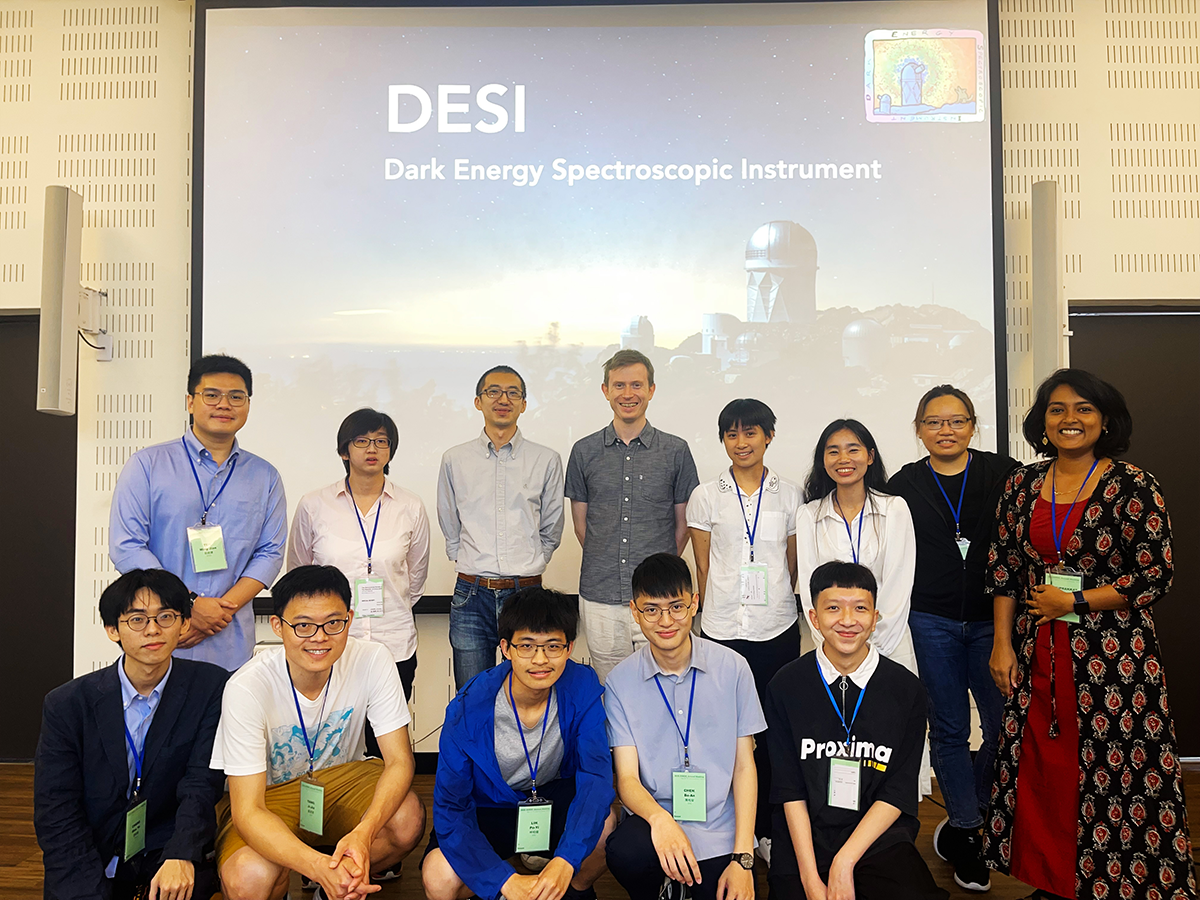
A 3D cosmic map derived from approximately 700,000 objects contained in this data release. The mapped sky area represents just 1% of the final comprehensive map to be generated by DESI. (Credit: David Kirkby / DESI collaboration)
Over the span of three decades, astronomers have made a profound discovery about the universe: its expansion not only persists but is accelerating, defying explanation through the laws of known physics. This phenomenon is termed "Dark Energy," and is one of the greatest mysteries of the cosmos in modern science. To learn more about Dark Energy, over 70 institutions worldwide, hosting hundreds of scientists and engineers, have joined hands to build the formidable Dark Energy Spectroscopic Instrument (DESI). Affixed to the monumental Nicholas U.Mayall telescope in Arizona, this advanced instrument aims to assemble the most extensive 3-D map of the universe ever unfolded, encompassing over 40 million celestial objects, from distant galaxies to supermassive black holes.
The DESI project reached a critical milestone by initiating its early data release, granting astronomers worldwide access to nearly 2 million observations. This early milestone serves as a testament to DESI's exemplary operational performance, the exceptional quality of the data collected, and its extraordinary potential. Among the contributors to this landmark achievement, prominent research teams from Taiwan, spearheaded by Assistant Prof. Ting-Wen Lan of National Taiwan University and Assistant Prof. Andrew Cooper of National Tsing Hua University, have played pivotal roles. Their laudable contributions are featured in a distinguished special issue of the prestigious Astrophysics Journal.
DESI employs cutting-edge technology, including high-speed robots and advanced fiber-optics, equipped with 5000 tiny "eyes," enabling unprecedented examinations of the universe through the telescope's lens. Each “eye” captures a “spectrum,” dissecting light into a myriad of colors. The team then uses this spectral information to measure the distance, motion, and element composition of the individual stars and galaxies.
Under the leadership of Prof. Lan, an assembly of researchers meticulously scrutinized tens of thousands of early spectroscopic measurements, ensuring the quality of the DESI galaxy spectra. Drawing their different areas of expertise, they evaluated the new automated methods, which enable acquiring and processing a large number of high-quality spectra ever documented. Lan remarked, “We set some tough exams for DESI and it passed all of them with top marks. We’re confident that DESI is ready for its mission to reveal the secrets of Dark Energy.”
Besides illuminating the mysteries of Dark Energy, DESI dedicates a significant portion of its observations to examining over 7 million remote stars within our own Milky Way galaxy. From this unique vantage point, researchers anticipate gaining valuable insights into the evolution of our galaxy through time, while simultaneously embarking on an ambitious quest to uncover the elusive cosmic enigma of dark matter.
The remarkable progress of the DESI project is a testament to the dedication of the international scientific community in their pursuit of understanding the cosmos. This pioneering endeavor is gradually unraveling the universe's enigmas and propelling astronomical research to uncharted territories of discovery.
DESI planetarium introduction video. (Credit: Fiske Planetarium)

Example of DESI spectra. The image shows a small faction of sky in the DESI footprint with circles indicating celestial objects with DESI spectroscopic observations. Spectra of five types of sources are shown on the right from passive galaxies, star-forming galaxies, quasars, stars and distant star-forming galaxies ordered from top to bottom respectively. (Credit: Ting-Wen Lan / DESI collaboration)

Prof. Lan and Prof. Cooper and their research team members. The background image is the Mayall Telescope, where the DESI is located. (Credit: Marilyn Sargent, UC Lawrence Berkeley National Laboratory)
DESI 5000 fiber positioner construction. (Credit: Marilyn Sargent/Berkeley Lab)




